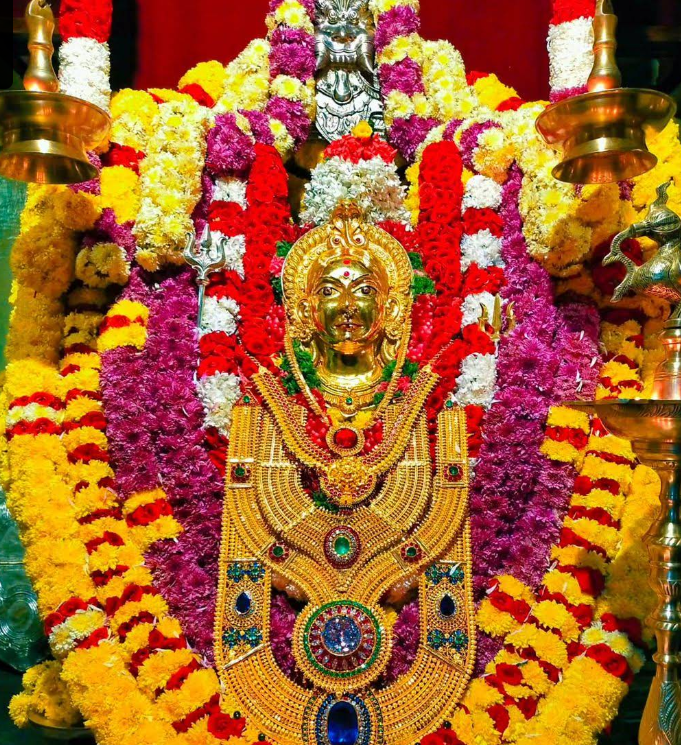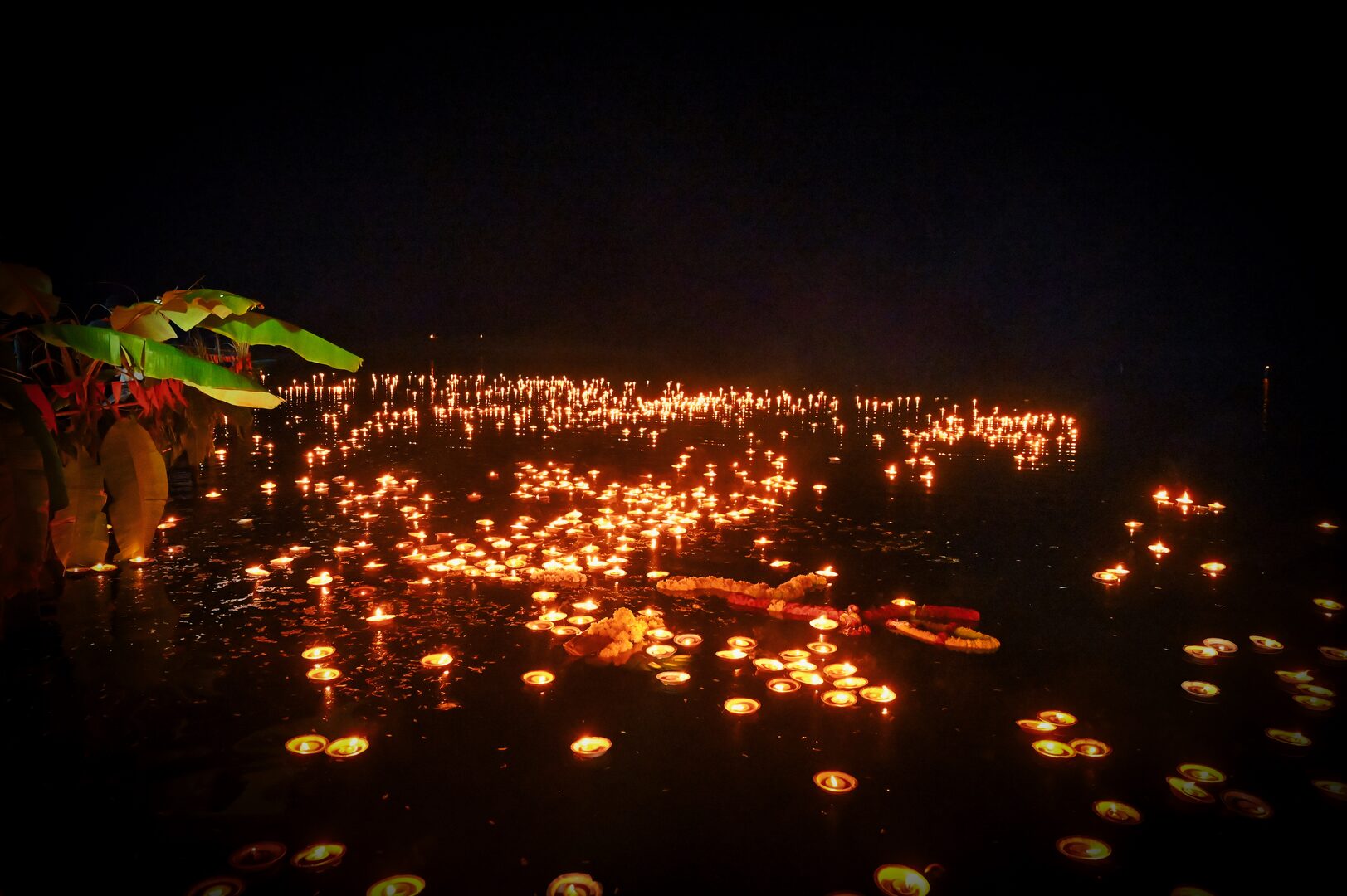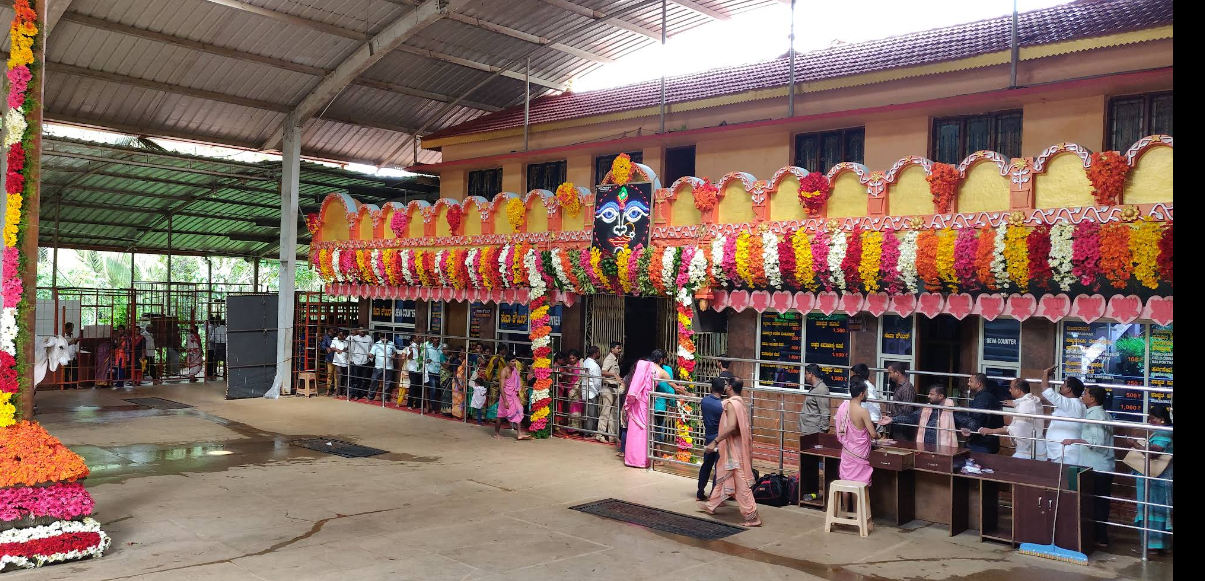Divine Sanctuary of Goddess Chowdeshwari Sigandur
🖼️ Photo Gallery





🛕 Temple Info
Nestled in the tranquil embrace of the Sharavati backwaters in the Shimoga district of Karnataka, Shri Kshetra Sigandur stands as a sacred abode of divine energy and unshakable faith. Dedicated to Goddess Chowdeshwari, lovingly called Chaudamma by her devotees, this temple radiates a powerful spiritual presence amid lush green forests and serene waters.
The moment one steps onto this holy land, a feeling of peace takes over. The air vibrates with chants and the fragrance of incense, creating an atmosphere where hearts open and worries fade. Shri Kshetra Sigandur is known as a spiritual field where caste, creed, or status dissolve into the oneness of devotion — where only the purity of faith is recognized.
Devotees from all walks of life journey here to surrender their troubles, seeking the compassionate grace of Chaudamma. It is widely believed that the Goddess never abandons her true devotees. Her temple is a refuge for those burdened by pain, injustice, or misfortune, offering relief that feels both miraculous and maternal.
An integral part of the temple’s spiritual ecosystem is the shrine of Bhutaraya, located under a venerable jackfruit tree just outside the main temple. He is worshipped as the guardian spirit and divine attendant of Goddess Chowdeshwari, believed to deliver justice, especially in cases of theft or wrongdoing. Devotees say that no one who wrongs another escapes the Goddess’s notice — for her divine power compels truth and righteousness to prevail.
💫 Importance
Shri Kshetra Sigandur is regarded as one of the most powerful Shakti Peethas in southern India — a place pulsating with the energy of the Divine Mother. The core belief that draws thousands here is the unwavering protection of Goddess Chowdeshwari. It is said that the homes and belongings of sincere devotees are safeguarded by her blessing, and even when theft occurs, the stolen items are mysteriously returned. For this reason, she is affectionately known as Sigandureshwari, the protector and restorer.
Beyond her role as a guardian, the Goddess is celebrated as a wish-fulfilling deity. Countless devotees share stories of miracles — barren couples blessed with children, the sick restored to health, legal and financial obstacles resolved, and the innocent granted justice. Farmers and traders too seek her blessings for prosperity, believing that her divine protection extends even to their fields and livelihoods.
The temple’s greatest beauty lies in its simplicity. There are no complex rituals or extravagant demands. What matters most here is bhakti — the sincerity of one’s heart and prayer. The Goddess’s grace flows freely to all who approach her with devotion.
One of the temple’s most noble practices is Annadana, the sacred offering of free food. Nutritious and delicious prasadam is served to everyone, regardless of background, three times a day. This tradition reflects the Goddess’s boundless compassion and the temple’s enduring commitment to selfless service — a living embodiment of Dharma in action.
📜 History
The sacred origins of Sigandur trace back several centuries through legend and devotion. The first worship of Chaudamma began deep within a forested region once known as Devikanu or Chaudi Bana, under a majestic Sampige tree. The deity, originally a shapeless stone, was revered by the Kollanayaka family of Hakkalamane in Sigandur as their family goddess for generations.
The temple’s modern history begins around 1938, when Seshappa Nayaka, son of Kollanayaka, experienced a divine revelation. During a hunting trip in the Shige forest, he found himself lost and terrified. In desperation, he called upon his family deity — and the Goddess appeared before him in a radiant vision. She commanded that she desired to be worshipped in one permanent place and instructed him to consecrate her presence at Chaudi Bana.
Seshappa Nayaka obeyed the divine instruction with great devotion. He performed one hundred Chandika Yagas and installed a silver mask on the stone idol, giving the Goddess a distinct form that devotees could worship.
Decades later, the construction of the Linganamakki Dam in the 1960s submerged the original site, displacing the family and their place of worship. Attempts to relocate the Goddess across the river failed; it was divinely revealed that she would remain on her chosen side.
Years passed, until Seshappa’s son, Ramappa, began having recurring dreams of a particular spot near the backwaters — a place radiant with divine energy. Guided by these visions, he began building a new temple in 1987 with community support. The greatest miracle occurred in 1990, when the sacred stone idol, impossible for learned priests to lift, was effortlessly raised by Ramappa after he vowed lifelong service to the Goddess.
On February 12–14, 1990, the idol of Sigandureshwari Devi was consecrated with grand rituals, marking the official establishment of the temple in its current location.
From a humble shrine beneath a forest tree, the temple has evolved into a majestic complex — complete with vast halls, meditation areas, yaga shala, accommodation for pilgrims, and annadana facilities. Today, Shri Kshetra Sigandur stands as a beacon of faith, drawing pilgrims not only from Karnataka but from across India and beyond.
🪔 Pooja Timings
The temple follows a sacred rhythm of daily worship, beginning at dawn and closing at dusk.
Darshan Timings:
- Morning: 5:00 AM – 2:30 PM
- Evening: 4:00 PM – 7:00 PM
- (Closed from 2:30 PM to 4:00 PM for cleaning and preparation.)
Daily Rituals:
- Before Sunrise: Abhishekam (holy bath) to the original stone idol.
- Morning: The Goddess is adorned in fine sarees, silver or gold masks, and garlands of fresh flowers. Chandika Homa and other Vedic rituals follow.
- Midday: Naivedya (food offering) and Maha Mangalarati (grand lamp offering).
- Throughout the Day: Devotees participate in pushparchane (flower offering), kumkumarchane, and Saptashati Parayana (recitation of sacred verses).
Annadana Timings:
- Breakfast: 7:00 AM – 9:00 AM
- Lunch: 12:00 PM – 2:30 PM (may extend on crowded days)
- Dinner: 7:30 PM – 9:00 PM
The temple’s discipline and organization ensure that every devotee experiences peaceful darshan and receives the Goddess’s blessings in a serene, welcoming environment.
🚌 Transport Options
Reaching Sigandur is not just travel — it’s a pilgrimage through nature’s splendor. The journey, surrounded by thick forests, mist-laden hills, and sparkling backwaters, is as spiritually enriching as the destination itself.
By Air:
- Mangalore International Airport (IXE) – about 150 km away.
- Hubli Airport (HBX) – about 165 km away.
- From either airport, taxis or buses can be hired to reach Sagar or Kollur, from where Sigandur is easily accessible.
By Rail:
- The nearest major station is Sagar Junction (SRF), well-connected to Bengaluru, Mysuru, and Hubli.
- From Sagar, one can take a bus or taxi to Holebagilu, where the scenic ferry across the Sharavati backwaters offers an unforgettable experience.
By Road:
- Via Sagar and Holebagilu Ferry:
- Drive about 40 km from Sagar to Holebagilu.
- Take the government-operated ferry across the Sharavati River (approx. 20–30 minutes).
- Ferry fare: ₹10 per person, ₹50 per car (one way).
- Ferry timings: 7:00 AM – 6:00 PM (approximate).
- After crossing, travel another 5–6 km by bus or jeep to reach the temple.
- Via Kollur (Direct Route):
- Avoids the ferry crossing.
- The route passes through the Western Ghats, offering breathtaking forest and mountain views.
- Distance from Kollur: approximately 45–50 km.
🏙️ Nearby Cities
- Sagar: ~40 km
- Jog Falls: ~40 km
- Kollur: ~46 km
- Shimoga: ~105 km
A new bridge is now operational, making access even smoother. Devotees are encouraged to verify current ferry and bridge conditions before visiting.
MytempleMypride Reflection
In the quiet reflection of Sharavati’s waters, faith takes form and compassion finds its voice. At Sigandur, every prayer is heard, every heart is welcomed, and every soul is reminded of the Mother’s boundless grace. Here, the divine sees no difference — only devotion. This sacred land teaches that when faith is pure, miracles are not exceptions but everyday blessings. MyTempleMyPride celebrates such living temples — where divinity dwells not just in stone, but in the faith of the people who believe.